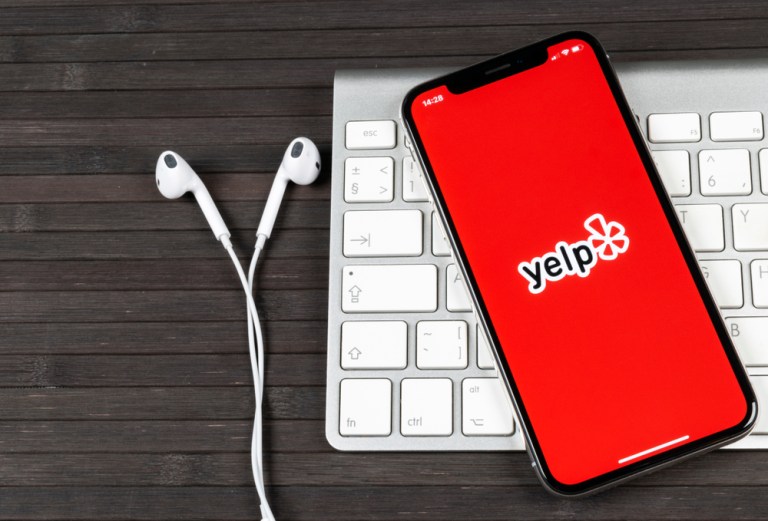Yelp Stock Slammed On Advertiser Losses

Yelp would seem to have an enviable place in the digital future. Take the emerging world of connected cars, where various players are competing to bring eCommerce and digital payments into vehicles.
In early November, for instance, Buick said that drivers of its cars can now make on-the-go reservations at a variety of restaurants using Yelp Reservations.
But to get there, Yelp has to get through days like Friday (Nov. 9). The company’s stock fell as much as 32 percent after the release the day before of its Q3 financials. The main problem? Yelp managed to gain no net new advertising customers – zero, zilch – during the third quarter of 2018. That failure followed a switch earlier this year from long-term ad contracts in Yelp’s local markets to what a report called “more flexible, non-term contracts. That change resulted in significant contract cancellations.”
The report noted that the cancellations were expected, but it was obviously a lot to take for investors. For Q3, Yelp reported an 8 percent year-over-year revenue increase, to about $241.1 million. That was $1 million lower than the company’s Q3 outlook range, “owing to slower-than-expected local advertising revenue growth,” Yelp said. Q3 revenue also came in below analyst projections of $245 million.
Yelp Transition
“Although the number of new local account additions remained higher in the third quarter compared to periods prior to the transition to non-term advertising, the pace of new account growth that we saw in the first half of 2018 slowed in the third quarter,” Yelp CEO Jeremy Stoppelman and CFO Lanny Baker said in a letter to shareholders. “This deceleration was unexpected given the strong momentum and positive customer feedback we saw throughout the first half of the year.”
On Yelp’s post-earnings conference call, Baker declined to offer a specific, single reason for the revenue shortfall, but said that “a number of smaller, compounding issues arose, including slower-than-expected sales head count growth, a change in advertising promotions, a technical issue in flowing leads to our reps and a lower success rate in contacting business decision-makers by our outbound sales calls.”
Improvements are in place, but they may not produce immediate results, company executives said in that shareholder letter.
“We simplified the process for business owners to claim their Yelp pages, our strongest pipeline of prospective advertising candidates,” Stoppelman and Baker wrote. “Our lead assignment system is also back to delivering a steady flow of high-quality leads to local sales reps after some minor adjustments. While we are encouraged with the early results of these efforts, their benefit to fourth-quarter financial results will likely be modest.”
Yelp Work
The company may need to do more, according to a note from Stifel analysts. “Unfortunately, to compete more effectively against digital platforms like Google, Facebook, Twitter and Snap (among others) for local ad budgets, Yelp may need to eventually make more dramatic changes to its self-service ad platform,” the note said.
Yelp executives also said that changes in Google’s search algorithm served to depress business during Q3.
The Q3 shortcomings have led to a reduction in Q4 expectations. Yelp said that its fourth-quarter revenue will be in the range of $938 million to $942 million. That compares to the previous projection of $952 million to $967 million.
Third-quarter net income, meanwhile, increased nearly 88 percent, to $15 million in the third quarter of 2018, which the company said was its strongest net income in three years.
Among the positive notes for Yelp, according to the shareholder letter, was the beginning of the rollout in October of “an updated mobile app user experience to make it more personalized and localized and to highlight our transaction features, particularly in the restaurants category. Since the launch of the updated app, we have seen an uptick in new and repeat usage, as well as stronger user engagement and more transaction activity.”
The restaurant sector, in fact, is experiencing an innovation wave, with digital technology helping to — or promising to — bring new efficiencies to the space, along with boosting customer acquisition and loyalty. As PYMNTS has reported, those technologies are bringing more options for consumers to order and pay for their meals, such as kiosks and mobile ordering. In one new approach, for instance, some QSRs are offering delivery beyond the home and office.
In fact, according to the PYMNTS Restaurant Readiness Index, 62 percent of consumers said the availability of digital innovations would make them more likely to visit restaurants in the future. That would seem to both provide opportunity for Yelp in this large space, and also indicate that competition for consumer loyalty and dollars will increase in the coming years, providing more challenges for the company as its shifts to new processes.